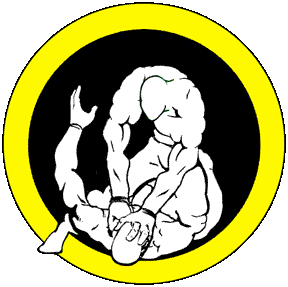Patrick McElligott’s Klitschko vs Peter Preview
Posted on | September 8, 2010 | No Comments

By: Patrick McElligott
September 11
At Frankfurt, Germany (ESPN3.com live, ESPN Deportes same-day tape, ESPN next-day tape): Wladimir Klitschko vs. Samuel Peter, rematch, 12 rounds, for Klitschko’s Ring/IBF/WBO heavyweight title.
It’s been five years since Wladimir Klitschko survived three knockdowns to win a unanimous decision over Samuel Peter. Since that fight, Klitschko has dominated each of the nine challengers that he has faced, with only one lasting all twelve rounds. His cautious, systematic manner of breaking his opponents down has earned the respect of the boxing community, but little recognition among the general sports fans.
In those same five years, Sam Peter has been at times exciting, at times impressive, and frequently disappointing in the ring. He has won ten fights, including two decisions over James Toney. However, he showed no desire to win in successive bouts against Vitali Klitschko and Eddie Chambers.
Peter has made quick work of four opponents in a row, although only one – Nagy Aguilera – had a victory over a former top contender. The shallowness of the current field of heavyweight contenders is definitely a factor in Sam’s securing this rematch at this time. Without question, if Peter enters the ring weighing less than 240 pounds, he has a solid chance of defeating any contender in the division. More, with his impressive punching power, he has the capacity to seriously hurt any heavyweight, including Wladimir.
The question is, can he put his punches together in a manner where he can deliver that power on September 11? As we saw five years ago, Sam will have to land more than one hard shot at a time, because Wladimir has the ability to get off the canvas – even three times – and still win a decision. Although Klitschko’s three loses are all by knockout, they came before Manny Steward taught him to relax in the ring. More, Steward is the best trainer for teaching tall fighters how to take full advantage of their height in the ring.
Years ago, when he was a rising prospect, Peter had an opportunity to be trained by Teddy Atlas. Sam’s stubborn streak resulted in this not happening, something that I believe reduced his chances of becoming a great heavyweight champion. It’s not only that Atlas insists upon discipline in those he trains now, but he understands the one technique that a shorter opponent simply must have in order to compete with either of the Klitschko brothers.
In Michael Arkush’s excellent book “The Fight of the Century,” about the March 8, 1971 Frazier vs Ali bout, he touches upon this. Before that epic battle, some were comparing Smokin’ Joe’s style to that of the great Rocky Marciano. Frazier noted that they were actually distinct: Marciano fought in a crouch, and often ducked his opponent’s punches; Frazier bobbed-and-weaved, much like Henry Armstrong.
Some other heavyweight champions had also bobbed-and-weaved. Jack Dempsey did against Jess Willard. One has to be in great condition to bob-and-weave effectively for many rounds; hence, by the time he fought Gene Tunney, Dempsey was reduced to ducking.
Floyd Patterson used a style of bobbing-and-weaving that was known as the “peek-a-boo.” His trainer, the legendary Cus D’Amato, also taught Jose Torres and Mike Tyson this style. It allows a fighter with fast hands to deliver extended combinations with full power and increased accuracy. (Those of us who live in the upstate New York area remember Cus, when Iron Mike was still an amateur, saying he finally found a heavyweight with Patterson’s speed and delivery, and with Liston’s power.)
There has been a common thread in Wladimir’s fights in recent years, when he has faced shorter opponents: they have had great difficulty in getting inside on him on a consistent basis. A few have made it inside a few times, and then been tied up. Klitschko’s physical strength then saps his opponents. Even as talented a boxer as Calvin Brock end up standing in front of Wladimir, looking at his head and shoulders, attempting to anticipate an opening. As a result, they eat his jab, a sure way to get beaten up for a few rounds, and then knocked out.
A shorter fighter has to bob-and-weave to get inside in a manner that allows them to land punches. When you bob-and-weave, you tend to watch your opponent’s feet and legs, not his shoulders and head. To counter this, Klitschko has to rely first upon his jab, but this allows one to get under his jab. Watch a Frazier or Tyson: they actually can come under and land their own jab, setting up their attack.
Next, Klitschko would be forced to commit to moving forward, pushing the opponent backwards (like Foreman vs Frazier), and risking throwing uppercuts. Neither Klitschko brother is gifted with a fast, effective uppercut. They tend to fight too stiffly, and in the heat of competition, throwing an uppercut places them at maximum risk.
For a big heavyweight, Sam Peter has surprisingly fast hands. He also has the ability to learn new techniques, as the second Toney fight showed. However, he is “top-heavy” in stature, which can create problems with balance if he attempted to bob-and-weave. It would have been to his advantage to have had Atlas training him years ago. I’ll be surprised if his trainers have made many adjustments in his approach to the rematch. So his best chance is to set a pace that Klitschko will have difficulty hanging with. But, in order to do that, Sam Peter will have to be in much better condition – both mentally and physically – than he has ever been in so far.
Enjoy the fight!
Tags: Auto > boxing community > draft > espn deportes > espn3 > heavyweight contenders > mcelligott > punching power > Samuel Peter > top contender > Vitali Klitschko > Wladimir Klitschko



